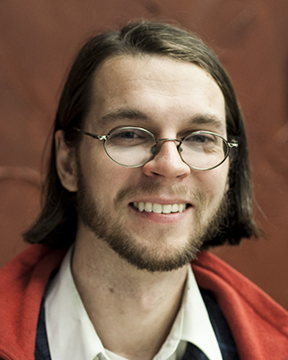Needed: A boatload of teachers with the training and the itch to lead computer science (CS) classes. Finding these educators – those who can weave CS concepts into their math or science classes, or those who want to teach the subject outright – can be difficult. Without these teachers, not all students will get a chance to learn CS skills. Bridging that gap is the ultimate goal of a teacher fellowship offered this summer in Ohio.
The Air Force Institute of Technology Summer 2020 Teacher Fellowship will give one to two high school educators the chance to help create classroom activities that incorporate science, math and computer science concepts. Applications are due April 8.
Helping to oversee this project is Chris Orban, assistant professor of physics at Ohio State University’s Marion campus. He provided details:
Q: Tell us about your educational background, your areas of interest and the courses you teach.

A: My educational background is in computational physics. I have used supercomputers to perform simulations ranging from the 14-billion-year history of the universe to the sub-femtosecond interactions of intense lasers. At Ohio State, I teach introductory physics courses and I advise Ph.D. students on various computational physics and education research projects.
In 2017, I launched the STEMcoding YouTube channel (https://youtube.com/c/STEMcoding), which features STEM-focused coding tutorials aimed at the high school level.
Q: What sparked your interest in creating this summer teacher fellowship and what is its aim?
A: In 2019, the release of the first image of gas falling into a black hole was a perfect illustration of just how integral computer science has become to modern research and the way that interdisciplinary teams work together to solve problems.
But when you look at the way computer science appears in schools it is typically as a separate course with relatively few tie-ins to math and science content, and math and science courses typically don’t have tie-ins with computer science – even with the Ohio computer science educational standards applying broadly to “other disciplines” when appropriate.
Empowering teachers is the key to creating a more integrated curriculum, which is why I have worked so hard to secure funding for a summer teacher fellowship.

Q: What kind of teachers are you looking for to apply for the fellowship?
A: We are primarily looking for one to two high school math and/or science teachers who are interested in integrating computer science into their math/science classrooms. No prior coding experience is necessary.
We are also looking for teachers who are well positioned to have an impact on the diversity of students who ultimately gain computer science skills. Applicants should be currently working high school teachers who are also U.S. citizens.
Q: How long will the fellowship last, where will it take place and what will the compensation be? Where will the funding come from?
A: Fellows can work between six and 12 weeks, taking breaks in the middle for vacation, if needed. We will be flexible. The fellows will need to visit either Columbus or Dayton regularly and work from home on other days.
The stipend is $1,250 per week. The funding comes from the U.S. Department of Defense High Performance Computing Modernization Program, and the position is in collaboration with the Air Force Institute of Technology in Dayton. This is a natural partnership with the STEMcoding project because the Air Force regularly uses computers to solve science and engineering problems.
Q: What will you and the selected teachers work on during this fellowship? What might the end product be?
A: The project is really going to depend on the teacher, but to integrate more computer science into math and science you really have to look at what people are already using in their courses and create a more computer science-connected version of that activity.
Many of the STEMcoding activities I’ve created thus far, for example, are inspired by web interactives from PhET (https://phet.colorado.edu) where students learn science concepts but they do not see or work with the underlying code (even if the math and science part of that code is relatively simple).
The goal is to create a new activity including pre- and post-assessments to gauge the impact on student learning that teachers might actually use next year.
Q: Will there be “field trips” to other sites or other planned events?
A: Yes! The fellows will get a tour of supercomputers and the Extreme Light laser system at the Air Force Institute of Technology.
Q: Where can interested teachers find more information about this fellowship?
A: For more information, including a link to apply, visit https://u.osu.edu/stemcoding/2020/01/31/afit-summer-2020-teacher-fellowship/
Q: Is there anything else you would like to share about this opportunity?
A: For folks who apply but aren’t selected, I am also running an online course this summer for physical science and physics teachers where folks can learn how to integrate computer science into those courses.
More information about that course is available at https://www.aapt.org/K12/codingintegration.cfm